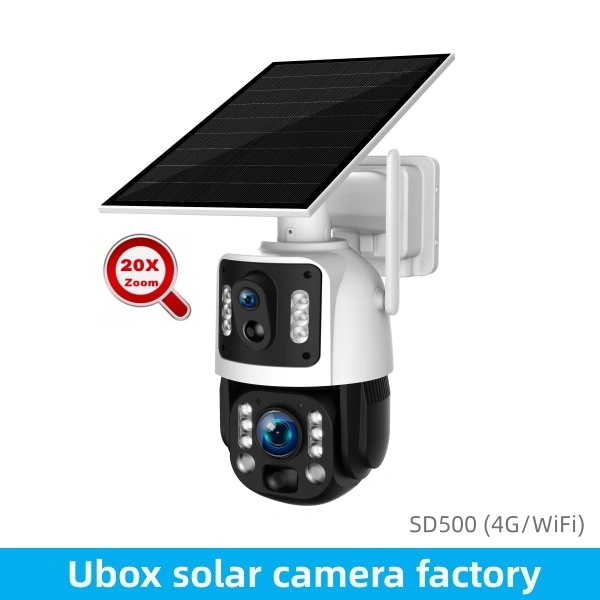Energy Infrastructure Monitoring: Innovative Applications of Solar Cameras in Oil & Gas Fields and Transmission Lines
Securing and monitoring energy infrastructure, such as remote oil and gas fields or sprawling power transmission lines, presents a monumental challenge. These assets are often located in harsh, off-grid environments where traditional power and wired internet are non-existent. The high cost of manned patrols and the limitations of conventional CCTV systems leave critical infrastructure vulnerable to theft, vandalism, and operational failures.
As an engineer with over a decade of hands-on experience in this field, I’ve seen firsthand how traditional solutions fall short. The logistical nightmare of trenching cables and the prohibitive expense of establishing grid power at remote sites often make comprehensive surveillance impractical. This is where the strategic deployment of 4G solar security cameras becomes not just an alternative, but a transformative solution.
The Off-Grid Revolution: How Solar-Powered Cameras Work
The core innovation behind this technology is its complete self-sufficiency. A 4G solar camera system is an integrated unit comprising a high-efficiency solar panel, a high-capacity lithium battery, a low-power consumption camera module, and a 4G LTE cellular modem. This setup eliminates the two biggest barriers to remote surveillance: power and data connectivity.
During the day, the solar panel charges the battery while simultaneously powering the camera. At the heart of this system is a sophisticated Battery Management System (BMS), a critical component we have perfected at UBOXCAM. A robust BMS optimizes charging efficiency, protects the battery from overcharging or deep discharge, and ensures reliable operation in extreme temperatures, a common reality for energy infrastructure. This allows our cameras to operate autonomously for days, even through extended periods of cloud cover or rain.
Solar 4G Cameras vs. Traditional Wired CCTV: A Clear Comparison
For B2B clients like engineering contractors and energy operators, the decision to adopt new technology hinges on ROI and operational efficiency. Here’s a direct comparison that highlights the compelling advantages of a solar-powered approach for remote sites.
| Feature | Solar 4G Security Cameras | Traditional Wired CCTV |
|---|---|---|
| Deployment Speed | Rapid (Hours) | Slow (Weeks or Months) |
| Installation Cost | Low (No trenching, cabling, or grid connection costs) | Very High (Extensive cabling, power infrastructure, labor) |
| Location Flexibility | Extremely High (Can be installed anywhere with a cell signal) | Very Low (Tethered to power and network cables) |
| Operational Cost | Minimal (Low-cost data plan, no electricity bills) | High (Electricity consumption, ongoing maintenance) |
| Scalability | Easy to add or relocate cameras as needs change | Difficult and expensive to expand coverage |
Case Study: Securing a Remote Oil Well Pad
Problem: A mid-sized oil and gas operator in a remote region was facing persistent theft of valuable equipment like copper wiring and wellhead components. Manned guard patrols were costly, infrequent, and unable to provide 24/7 coverage over a large area. The lack of on-site power or internet made traditional surveillance impossible.
Solution: We designed and deployed a customized solution using four UBOXCAM 4G solar-powered PTZ cameras. These units were strategically positioned to cover all access points and critical assets. The cameras featured AI-powered human detection to minimize false alarms from wildlife and sent real-time alerts with video clips directly to the security team’s mobile devices. The PTZ functionality allowed operators to remotely pan, tilt, and zoom to investigate any suspicious activity in detail.
Result: Within three months of installation, equipment theft was reduced by over 90%. The operator saved an estimated $200,000 in the first year alone by eliminating losses and reducing the need for physical patrols. Incident response time improved dramatically, as security could verify threats instantly and dispatch authorities with accurate information.
Case Study: Proactive Monitoring of High-Voltage Transmission Lines
Problem: A major utility provider needed a more efficient way to monitor its vast network of high-voltage transmission lines, especially in mountainous and fire-prone zones. Key concerns included vegetation encroachment, insulator damage from weather or vandalism, and structural integrity of the towers. Manual inspections were slow, dangerous, and expensive.
Solution: We provided a series of long-range solar security cameras equipped with powerful optical zoom lenses. These cameras were mounted directly onto transmission towers. Using the system’s scheduling function, the cameras were programmed to automatically capture high-resolution images of critical components like insulators and conductors at set intervals. This data was transmitted via 4G to a central monitoring platform for analysis.
Result: The utility cut its physical inspection costs by 70%. Engineers could now perform “virtual patrols” from the safety of their office, identifying potential faults like cracked insulators or dangerously close tree branches weeks before they could cause an outage. This proactive maintenance approach significantly improved grid reliability and enhanced worker safety.
Common Questions & Engineering Solutions
As a solutions provider, we frequently address key technical concerns from our B2B clients. Here are some of the most common ones and how we solve them:
- How do the cameras perform during long stretches of bad weather?
This is a critical engineering challenge solved by system design. We calculate the power requirements based on the specific geographic location, factoring in average solar irradiation. We then deliberately oversize the solar panel and battery capacity to create an “autonomy buffer,” ensuring our systems can run for 3-7 days with zero sunlight. - Is 4G connectivity reliable enough for security?
Reliability is paramount. Our cameras are built with high-gain external antennas to capture weak signals in remote areas. For mission-critical applications, we offer dual-SIM models that can automatically switch to a backup carrier if the primary network fails, ensuring constant uptime. - Can these cameras withstand extreme heat and cold?
Absolutely. Industrial-grade components are non-negotiable. Our cameras are housed in IP66 or IP67-rated weatherproof enclosures. More importantly, they are designed with an operating temperature range of -20°C to 60°C (-4°F to 140°F), making them suitable for everything from frozen northern oil fields to scorching desert substations.
Checklist: Selecting the Right Solar Camera for Your Energy Project
Not all solar cameras are created equal. For demanding B2B applications, a consumer-grade product will fail. Use this checklist to guide your selection process:
- Power System Sizing: Verify that the solar panel wattage and battery capacity (in Watt-hours) are sufficient for your specific location and operational needs (e.g., continuous recording vs. motion-triggered).
- Build Quality and IP Rating: Insist on a minimum of IP66 for protection against dust and powerful jets of water. Materials should be corrosion-resistant.
- Network Performance: Look for features like high-gain antennas, support for major regional 4G bands, and ideally, dual-SIM capability for redundancy.
- Optical Zoom and Range: For monitoring large areas like pipelines or substations, a powerful optical zoom lens is essential. A long-range wireless security camera can be a game-changer.
- Remote Management Platform: Ensure the software or app is robust, allowing for easy remote configuration, device health monitoring, and multi-user access controls.
The application of 4G solar-powered security cameras is fundamentally changing how the energy sector protects and manages its most critical, remote assets. By overcoming the traditional barriers of power and connectivity, this technology delivers a cost-effective, highly scalable, and rapidly deployable solution. For 4G operators, wholesalers, and security installers, this represents a significant market opportunity to provide immense value to the energy sector.
If you are looking to enhance security and operational efficiency for your energy infrastructure projects, it’s time to explore a customized off-grid surveillance solution. Contact the UBOXCAM engineering team today to discuss your specific requirements and design a system that delivers unmatched reliability and ROI.

